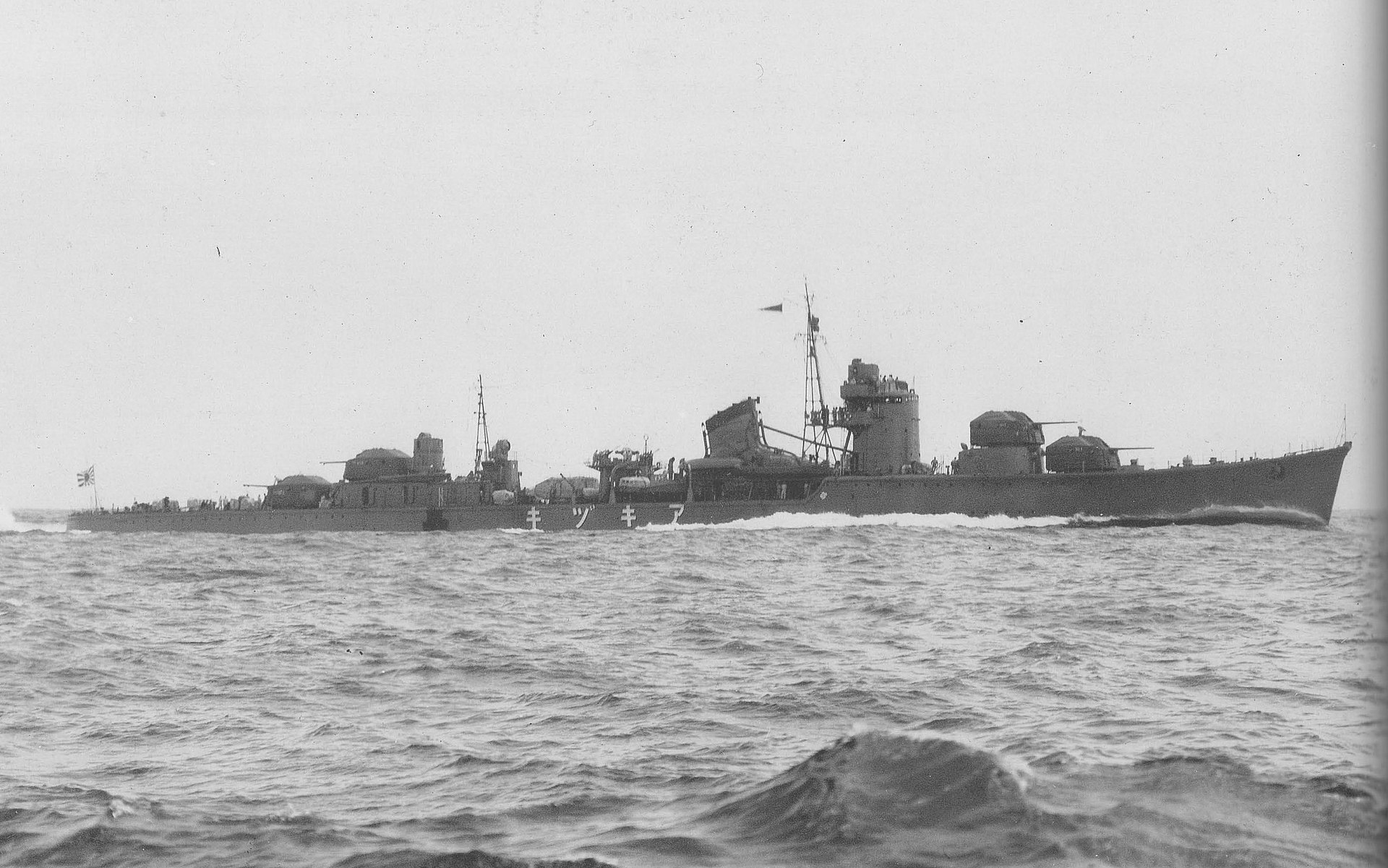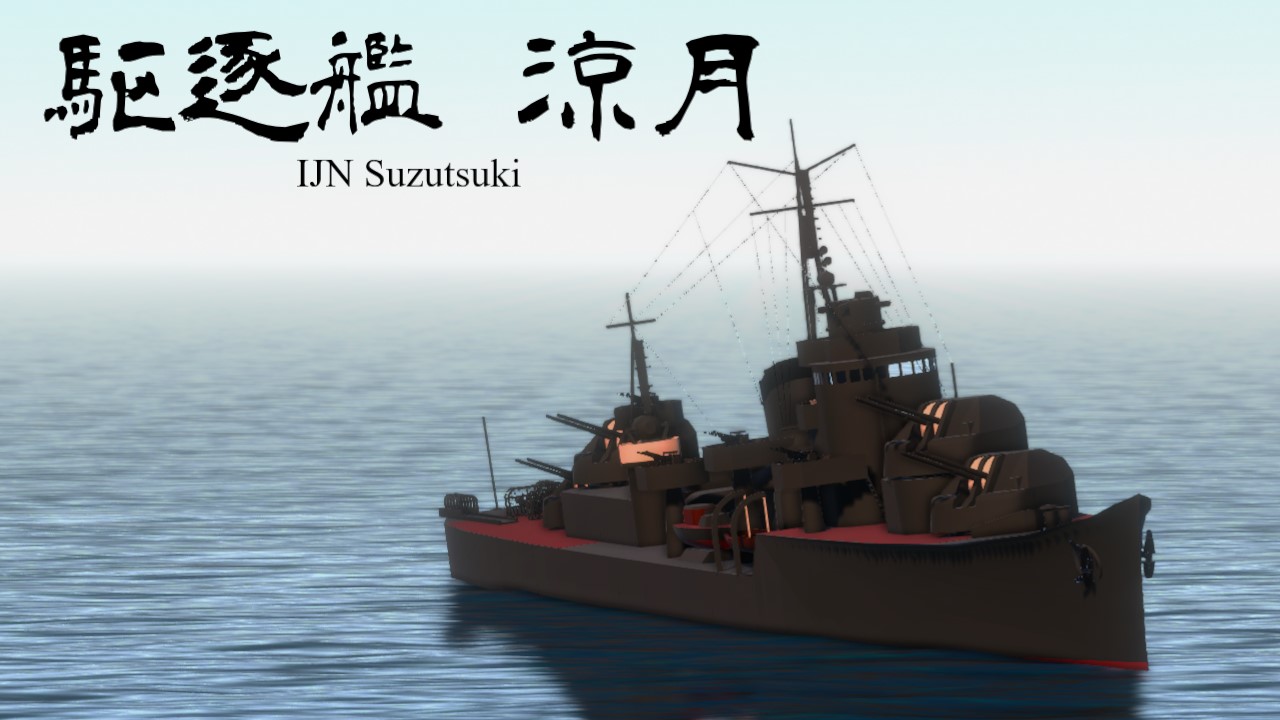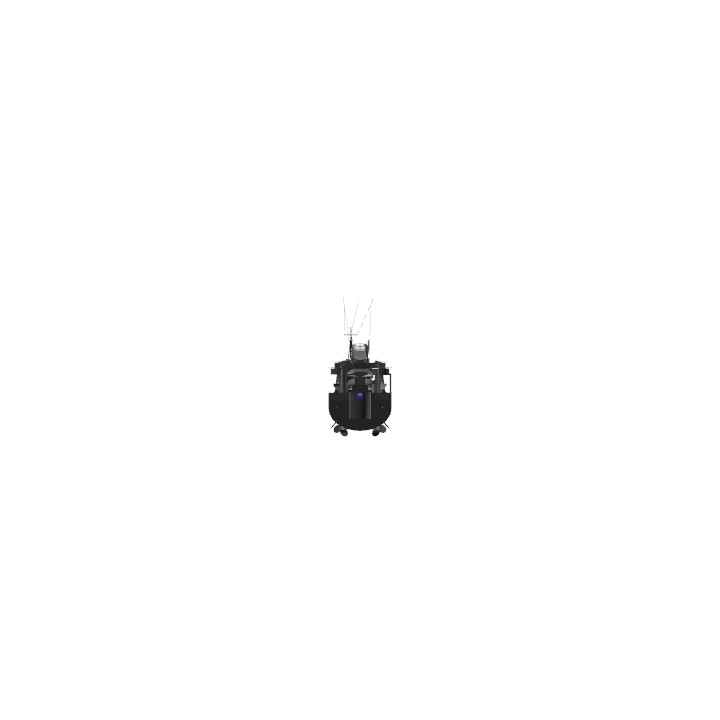Low part version can be downloaded from this link
Control
Throttle : Throttle
Roll : Steering
Brake : Brake and move backward
AG1 : Activate main gun (auto aiming)
AG2 : Activate torpedo launcher
AG5 : Activate machine gun (auto aiming)
AG7+VTOL : Activate pouring and draining system
Akizuki class destroyer
The Akizuki class destroyer is a class of first class destroyers of the Imperial Japanese Navy. It is also called the Otsu class destroyer from its name at the time of planning, and the Tsuki class from each ship's name. It was the first and last class of air defense destroyer built by the Imperial Japanese Navy. Twelve ships of the same type have been completed.

IJN Akizuki
Since World War I, countries have equipped their warships with anti-aircraft machine guns and high-angle guns as a countermeasure against aircraft, although there are differences in the perception of the aircraft threat. In the Imperial Japanese Navy, there was a proposal to convert obsolete Tenryu-class light cruisers and 5,500-ton class light cruisers into air defense cruisers, and this proposal was presented to the Emperor Showa. However, that plan was judged to be not cost-effective, and plans were made to build another air defense cruiser, but the plan was cancelled due to the high cost of construction.
The IJN's plans for air defense ships were not realized until the six Akizuki class destroyers in the 1939 Navy Armaments Enhancement Plan, and the first ship was commissioned in 1940. The IJN planned to mass-produce the Akizuki class destroyers and deploy them to escort Yamato-class battleships, modified Yamato-class battleships, and air squadrons.
The planning of this type began with a military command request around 1938. The initial requirements were,
Standard drainage capacity of 2,200 tons
Speed of 35 knots or more
Cruising range of 10,000 nautical miles at 18 knots
Eight 10cm long high-angle guns, four 25mm machine guns, two depth charge launchers (30 depth charges) for near and two (40 depth charges) for far.
In addition, it was equipped with a smoke screen deployment device and an aircraft rescue derrick. This ship was planned as a replacement for the carrier-based direct-attack destroyers, which were known as "dragonfly fishing" ships at the time, and was not designed to carry torpedoes. However, if the ship met the requirements for cruising range, she would carry 1,200 tons of fuel oil and have a drainage capacity of over 4,000 tons, and the plans finalized in April 1939 reduced her speed to 33 knots and her range to 8,000 nautical miles at 18 knots. At this point, the ship was to include one quadruple torpedo tube and eight torpedoes, and her classification was changed to "destroyer" and she was to be built.
IJN Suzutsuki
Destroyer Suzutsuki was the third ship of the Akizuki class destroyers, completed in late December 1942 at the Mitsubishi Nagasaki Shipyard and Machinery Works. On January 15, 1943, she was incorporated into the 61st Destroyer Squadron under the command of the 10th Squadron. She was engaged in transport operations and escort missions together with her sister ships Hatsuzuki and Wakatsuki.
On January 16, 1944, while escorting the special cruiser Akagi Maru to Wake Island, the Suzutsuki was torpedoed by an American submarine off the coast of Kochi Prefecture and severely damaged. She lost her fore and aft sections. Many crew members, including the commander of the 61st Destroyer Squadron and Captain Suzutsuki, were killed in action. Towed by Hatsuzuki and relief forces, she barely made it back to Kure.
On October 16 of the same year, after more than six months of repairs at the Kure Naval Arsenal, she was attacked by a U.S. submarine off the coast of Kyushu while engaged in transport operations with her sister ship Wakatsuki, and was hit by lightning on her bow. During the repair of this ship, the Battle of Leyte and Operation Ta-go occurred, and three ships of the 61st DWR (Akizuki, Hatsuzuki, and Wakatsuki) were sunk. The 61st Destroyer Squadron was disbanded on November 15, and the Suzutsuki was transferred to the 41st Destroyer Squadron. from late November to early December, the 41st Destroyer Squadron (Suzutsuki and Fuyutsuki) and Destroyer Maki were assigned to escort the aircraft carrier Junyo Taka (and the battleship Haruna on the return trip).
In early April 1945, the battleship Yamato and eight destroyers (Destroyer Squadron 17 [Isokaze, Yukikaze, Hamakaze], Destroyer Squadron 21 [Asashimo, Hatsushimo, Kasumi], Destroyer Squadron 41 [Fuyutsuki, Suzutsuki]) including light cruiser Yahaki participated in the Okinawa invasion operation. In the same battle, six ships, including the Yamato, were destroyed. In the same battle, six ships including Yamato are sunk. The next day, Suzutsuki barely returned to Sasebo in an aft state.
In a state of emergency repair, Suzutsuki became an air defense battery and was removed from the 41st Destroyer Squadron as of 5 July, and became a reserve ship. She was removed from the 41st Destroyer Squadron on July 5 and placed in reserve. After that, she and three other destroyers (Suzutsuki, Fuyutsuki, and Yanagi) were used as breakwaters for Kitakyushu Port in Kitakyushu City, Fukuoka Prefecture.

Suzutsuki in Sasebo (1945)

IJN Suzutsuki, IJN Fuyutsuki, and IJN Yanagi are breakwaters in Kitakyushu harbor
Specification
Length overall : 134.2m
Width overall : 11.6m
Normal load displacement : 2,701t
Full load displacement : 3,470t
Max speed : 33.0knot
Boiler output : 52,000hp
Main gun / AA gun : 4x Type 98 10cm L/65 twin-barreled gun
Torpedo : 1x 61cm four-barreled torpedo launcher (8x Type 93 oxygen torpedo)
Depth charge : 2x Type 94 depth charge launcher (54x type 95 depth charge)
Machine gun : 7x 25mm triple-barreled machine gun
Gallery




HAVE FUN!!!
Specifications
Spotlights
- EternalDarkness 1.4 years ago
- pancelvonat 1.4 years ago
- BMilan 1.4 years ago
- NatsukiHoshino 1.4 years ago
- ShiroNeko 1.4 years ago
- RicardoACE 1.4 years ago
- Fineilldoitmyself 1.4 years ago
- Ayanon 10 months ago
- Astro12 1.4 years ago
- DDVC 1.4 years ago
- mikomiko 1.4 years ago
- MentallyDistorted 1.4 years ago
- YarisSedan 1.4 years ago
- ChihiroFujisaki 1.4 years ago
- SonsoftheMoth 1.4 years ago
- AmethystAircraft 1.4 years ago
General Characteristics
- Created On Windows
- Wingspan 40.1ft (12.2m)
- Length 440.1ft (134.1m)
- Height 93.6ft (28.5m)
- Empty Weight 323,240lbs (146,619kg)
- Loaded Weight 956,049lbs (433,657kg)
Performance
- Power/Weight Ratio 3.208
- Horse Power/Weight Ratio 0.001
- Wing Loading 9.2lbs/ft2 (45.0kg/m2)
- Wing Area 103,808.4ft2 (9,644.1m2)
- Drag Points 12236
Parts
- Number of Parts 1446
- Control Surfaces 0
- Performance Cost 4,830





When you realise you can get an average of 80rpm from the main guns
Excellent work
@Oakland spoken from the legend
good job!
good
IJN SUZUKI